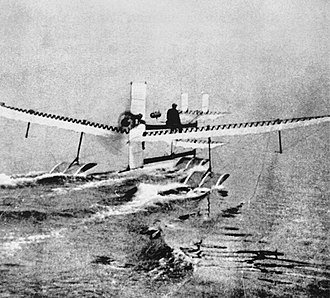Introduction
In the early 20th century, aviation was still in its infancy. The dream of flying had captivated the minds of inventors and enthusiasts alike. It was during this time that Henri Fabre, a French aviator and engineer, achieved a remarkable feat that would go down in history. On March 28th, 1910, Fabre successfully piloted a seaplane, known as the Fabre Hydravion, becoming the first person to achieve such a milestone.
The Fabre Hydravion
The Fabre Hydravion was a remarkable aircraft that combined the capabilities of both a boat and an airplane. It was designed to take off and land on water, making it ideal for operations in coastal areas and over bodies of water. The seaplane was equipped with pontoons, which provided buoyancy and stability during takeoff and landing.
Fabre’s seaplane was powered by a 50-horsepower engine, which provided the necessary thrust for flight. The aircraft had a wingspan of approximately 14 meters and a length of 10 meters. It had a maximum speed of around 55 kilometers per hour and could reach an altitude of up to 100 meters.
The Historic Flight
On that fateful day in March 1910, Fabre took off from a water runway near Martigues, a town in southern France. The weather conditions were favorable, with clear skies and calm waters. As the seaplane accelerated and gained speed, Fabre skillfully maneuvered the controls, gradually lifting the aircraft off the water’s surface.
The moment was filled with anticipation and excitement as Fabre’s seaplane soared into the sky, defying gravity and proving that flight over water was indeed possible. The flight lasted for approximately 1,500 meters before Fabre safely landed the aircraft back on the water.
Significance and Impact
Fabre’s achievement had a profound impact on the field of aviation. His successful seaplane flight demonstrated the viability of aircraft designed for water takeoffs and landings. This opened up new possibilities for transportation, exploration, and military applications.
Seaplanes became an integral part of aviation history, with further advancements and innovations in the years to come. They were used for various purposes, including search and rescue missions, aerial photography, and even passenger transportation.
Fabre’s accomplishment also inspired other aviators and engineers to push the boundaries of flight. It sparked a wave of innovation and experimentation, leading to the development of more advanced seaplane designs and improved aviation technology.
Legacy and Recognition
Henri Fabre’s achievement did not go unnoticed. His groundbreaking flight earned him international recognition and acclaim. He was hailed as a pioneer in aviation and received numerous awards and honors for his contributions to the field.
The Fabre Hydravion itself became a symbol of innovation and progress. It is now preserved in museums and serves as a reminder of the remarkable achievements of early aviators.
Conclusion
Henri Fabre’s seaplane flight on March 28th, 1910, marked a significant milestone in the history of aviation. His successful pilotage of the Fabre Hydravion demonstrated the feasibility of seaplanes and paved the way for future advancements in the field. Fabre’s achievement continues to inspire and serves as a testament to the human desire to conquer the skies.

